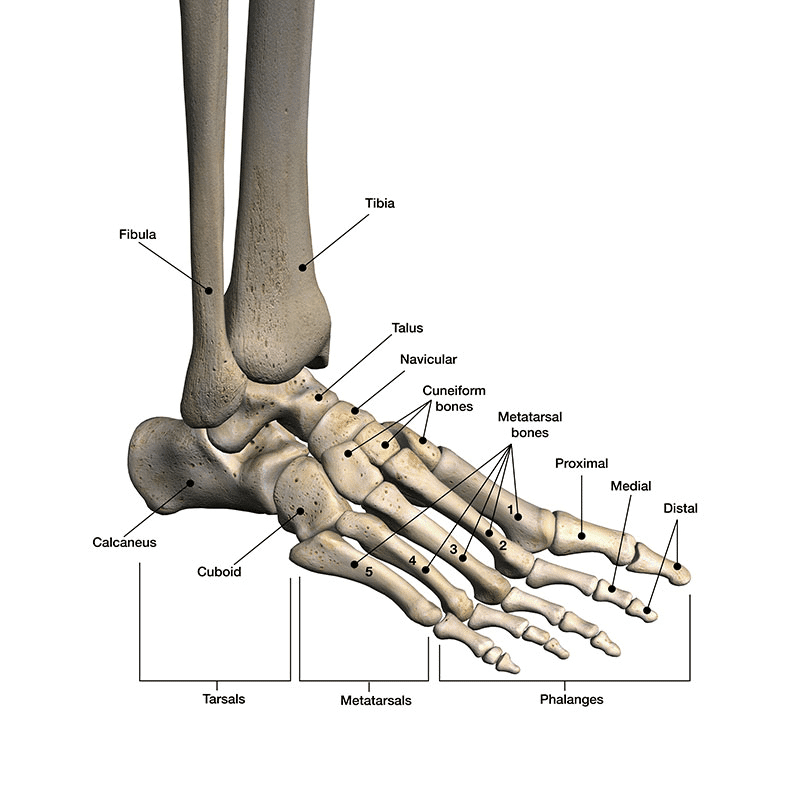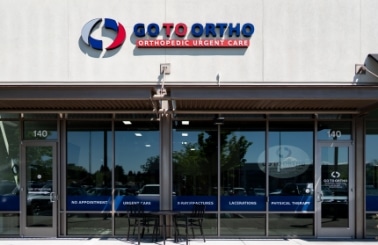
Foot and ankle injuries are quite common with pain and discomfort being the first signs of a problem. These injuries are often the result of ligament sprains, tendon or muscle strains or bone fractures. The way your foot is structured with 26 bones, 33 joints, 107 ligaments, and 19 muscles and tendons, and the way it works, and the way it affects other body areas (such as your back) add to its complexity and increase the potential for a variety of injuries.

Because we use our feet to do almost everything, any type of injury (small or large) can have a significant impact on everyday life. For this reason, you should never ignore any foot or ankle injuries and should seek prompt medical attention. The last thing you want is for an acute issue to become a chronic one with complications.
What Are The Most Common Foot and Ankle Injuries?
The most common foot and ankle injuries include sprains and fractures (broken bones). A sprain is an injury to the ligaments, and it can take a few weeks to many months to heal properly. A fracture is a break in a bone.
Other common injuries include:
- Cut foot
- Puncture
- Foot Strain
- Foot or Ankle Arthritis
- Dislocation
- Heel Pain (Plantar Fasciitis)
- Bunion
- Achilles Tendonitis
- Turf toe
- Heel spurs
What Causes Most Foot and Ankle Injuries?
The most common causes of foot and ankle injuries include:
- Lacerations (cuts)
- Fractures and Dislocations
- Soft Tissue Injuries and Amputations
- Infections
- Burns
What Are Typical Symptoms For Foot and Ankle Injuries?
In general, symptoms for foot and ankle injuries can vary depending on the type of injury, the mechanism of injury, the severity, and location.
Common symptoms range from:
- Broken skin and bleeding
- Pain and swelling in the injured area
- Limb or joint looks odd, in a strange shape or out of its normal position
- Numbness, tingling or a pins-and-needles feeling
- Pale, white, blue or cold skin on the injured limb
- Not being able to move the limb normally because of weakness (not just pain)
- Cannot bear weight
- Joint wobbles or feels unstable
- Warmth and redness
- Red streaks leading from the injured area
- Fever
How Are Foot and Ankle Injuries Diagnosed?
When you arrive at GoTo Ortho, your medical evaluation may include a medical history and physical exam.
Your doctor may ask you questions such as:
- Are you a diabetic or do you have arthritis?
- How did the injury occur?
Your physical exam may include as:
- Visual inspection (look at the injury)
- Sensory nerve exam (feeling)
- Vascular exam (circulation of blood supply)
- Muscular and tendon exam (movement and strength)
- Bone exam (broken bones or dislocated joints)
Your doctor may also order x-rays to identify fractures or dislocations or to rule out foreign bodies.
What Can You Do for Foot and Ankle Injuries?
Before seeking medical treatment, home care for foot and ankle injuries initially involves proper first aid techniques, such as:
Lacerations (Cuts):
- Apply pressure to the wound to stop bleeding.
- Wash dirt or debris from the wound, if possible.
- Cover the wound to prevent further contamination of injury.
- Do not remove large foreign bodies such as nails, hooks, or knives.
- Seek medical attention.
Fractures (Broken Bones) and Dislocations:
- Immobilize or splint the foot or ankle if possible.
- Cover the injury if the bone is exposed (open fracture) with a clean towel, cloth, or gauze.
- Apply ice for 20 minutes at a time to decrease the pain. Do not apply ice directly to the skin. Cover ice with a towel.
- Seek medical attention.
Soft Tissue Injuries and Amputations:
- Apply pressure to stop bleeding
Cover the injury with a damp bandage, if possible. - Elevate the foot to reduce bleeding.
- Retrieve the amputated body part, if possible.
- Cover the amputated body part, keep it damp, and place the part near ice to cool. Do not place the body part in direct contact with ice in order to prevent freezing.
- Seek medical attention.
Infections:
- Keep the injury clean and dry.
- Seek medical attention.
Burns:
- Thermal Burn – cool with water (not ice), then cover the injury.
- Chemical Burn – irrigate with lots of water, then cover the injury.
- Frostbite – rewarm with a warm-water bath or soak, then cover the injury.
- Seek medical attention.
How Are Foot and Ankle Injuries Treated?
The type of treatment you may need for any foot or ankle injury usually depends on the type and cause of injury. For example, for a laceration, your doctor will evaluate for depth or involvement of nerves, arteries, muscles, and tendons. For a dislocation, the doctor will evaluate to ensure there are no fractures. Dislocated bones must be put back in place with the goal of treatment being to preserve the function and stability of the joint. Whatever the final assessment, your doctor will know best how to treat the injury.
Whether you need splinting, casting, or stitches, we can provide this immediate care to you at GoTo Ortho. While mild foot and ankle injuries will heal with treatment, more severe injuries may require surgery. If your injury requires surgery, one of our surgeons (or affiliated surgeons) can perform the surgery at any one of a number of area hospitals.
Come see us for any foot or ankle injuries. Walk-in appointments are welcome. View our hours.



